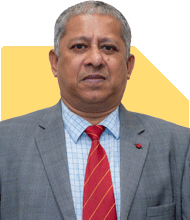I am 49 years old and wife 47 years, both are working, my in hand salary is 1.30 Lac and wife 50 k, my elder son graduation completed from reputed institute and he is doing paid internship, second child is in 9th std, Pf - 35 lac, with vpf, fd - 25 LAC, Mutual fund - 19 lac ( 10 k / month ), NPS 10 lac ( 9 k / month ), co share per month investment 40k ( 14 lac ), co society 2 k per month ( 2 lac ), personel term insurance 50 lac and from co 1 cr, co medical insurance 8 lac per year for family, total 3 flat at pune, 2 are rented 32 k per month rent, 25 lac FD IN bank, 5 lac in post total 60 lac loan, wife pf ( 6 lac ), ppf 17 lac till date, gold investment 150 gram, car having no loan, no other loan than this, big house at native place, plan to retire 55 years
Ans: You are doing well. You have built multiple assets. You are earning good income. You also have a retirement goal in mind.
Let us analyse from every angle — income, assets, liabilities, insurance, and goals.
? Understanding Your Financial Summary
– You are 49 and wife is 47.
– You both are working. Combined in-hand income is Rs 1.8 lakh per month.
– Elder son completed graduation and now in internship.
– Younger child is in Class 9.
– You want to retire at 55. That gives 6 years to prepare.
– You have flats, mutual funds, PF, FDs, gold, NPS and shares.
– You have Rs 60 lakh outstanding loan.
Your financial base is strong. But there is scope to improve.
? Income and Expense Control Is Good
– Your family income is Rs 1.8 lakh per month.
– You are investing monthly in mutual funds, NPS, and company shares.
– You also get Rs 32,000 rent from two flats.
– This helps in creating alternate income sources.
– No credit card or car loan. That shows discipline.
This gives stability now and helps build post-retirement income later.
? Retirement Planning at 55: Realistic with Careful Planning
– You plan to retire in 6 years. That’s a short horizon.
– After that, there will be no active salary.
– You will depend on savings, rent and interest income.
– So, the next 6 years must focus on reducing loans and increasing liquid assets.
Start early planning now for smoother transition.
? Existing Assets Evaluation
Provident Fund: Rs 35 lakh + VPF (you), Rs 6 lakh (wife)
– This will grow further in next 6 years.
– Keep it untouched till retirement.
PPF: Rs 17 lakh (wife)
– This is tax-free and safe.
– Continue till maturity.
Mutual Funds: Rs 19 lakh + SIP Rs 10,000/month
– This is decent. But SIP amount is low.
– You can afford to increase SIP now.
NPS: Rs 10 lakh + Rs 9,000/month
– This helps for retirement.
– But 60% of maturity is taxable.
– Also, NPS has some lock-in limitations.
Company Shares: Rs 14 lakh + Rs 40,000/month
– This is too high exposure to a single stock.
– This carries concentration risk.
FD: Rs 25 lakh (personal) + Rs 25 lakh (bank) + Rs 5 lakh (post)
– Too much parked in FDs.
– These give low returns post-tax.
– Reduce overdependence on FD gradually.
Gold: 150 grams
– This is fine. No need to add more.
Real Estate: 3 flats + native house
– 2 flats give Rs 32,000 rent.
– But property management cost is also there.
– Avoid further real estate purchase.
Overall, you have a good asset mix. But you must rebalance.
? Review of Loans and Liabilities
– You have total Rs 60 lakh loans.
– That’s high, considering nearing retirement.
– EMI must be eating part of your salary.
– Try to reduce it in the next 3 to 4 years.
– Prepay gradually with bonuses or rent.
You must retire loan-free. That should be a top goal now.
? Insurance Cover Is Basic, Needs Strengthening
– Term insurance: Rs 50 lakh (personal) + Rs 1 crore (company)
– Company insurance will stop when you retire.
– Personal insurance should be at least Rs 1 crore now.
– Buy an additional personal term cover if health permits.
Health insurance: Rs 8 lakh from company for whole family
– This is good now.
– But will end after retirement.
– Take personal family floater now, minimum Rs 15–20 lakh.
– Start policy early to avoid health-based rejection later.
Insurance gives protection. Don’t delay updating it.
? Children's Education and Life Stage Planning
– Elder son has finished graduation.
– Currently doing internship. Will become independent soon.
– Younger child in Class 9.
– You have 7 to 8 years for second child’s graduation.
– Start dedicated SIP or goal-based plan for that.
– Don’t disturb retirement savings for children’s education.
Keep goals separate to avoid stress later.
? Emergency Fund Looks Missing
– No separate emergency fund mentioned.
– This is risky with Rs 60 lakh loan.
– Keep at least Rs 3 to 5 lakh liquid.
– Use sweep FD or liquid funds.
Build emergency fund separately. Do not mix with investment money.
? Mutual Fund Strategy Needs Focus
– You are investing only Rs 10,000 per month.
– This is less for your current income level.
– Increase it to at least Rs 30,000 per month.
– Use actively managed diversified funds.
– Avoid index funds.
Index funds do not protect downside.
No fund manager support.
In volatile markets, index funds fall heavily.
Use actively managed funds for better control and support.
? Direct vs Regular Mutual Fund
If you are using direct plans, review them carefully.
Direct plans have lower cost.
But no guidance or personal review.
Wrong selection may give poor performance.
No tax-efficiency planning is done.
Regular plans through a Certified Financial Planner offer ongoing advice.
As you near retirement, advice is more important than expense.
? Rent Income Is Good Support But Not Enough
– Rs 32,000 rent per month is useful.
– But don’t depend only on it after retirement.
– Maintain mutual fund and debt fund mix to generate retirement income.
– Use Systematic Withdrawal Plan after 55.
– Keep rent income for basic living expense.
Diversify income streams. Don’t depend only on rent.
? Retirement Income Planning Needs Action Now
After 55, there will be no salary.
You will need income from:
– Rent (Rs 32,000 approx)
– SWP from mutual funds
– Interest from FDs or bonds
– Partial EPF withdrawals
Start mapping future expenses now.
Create monthly income buckets.
Assign funds to each bucket.
Keep 5 years’ expenses in debt.
Keep 10–15 years’ expenses in hybrid.
Keep long-term corpus in equity.
Plan withdrawals smartly to manage taxes too.
? Tax Consideration for Mutual Funds After New Rules
– Long-term gains above Rs 1.25 lakh taxed at 12.5% for equity funds.
– Short-term gains taxed at 20%.
– For debt funds, gains taxed as per your slab.
– Plan redemptions smartly.
A Certified Financial Planner can optimise withdrawals to reduce tax.
? Company Share Exposure Is High Risk
– Rs 40,000 per month goes to company stock.
– Total value is Rs 14 lakh now.
– You may hold 20–25% of total portfolio in a single company.
– Anything more adds risk.
– Gradually shift part of this to diversified funds.
Loyalty to company is good, but not in investment.
? Steps You Should Take Now
– Build emergency fund of Rs 5 lakh.
– Increase mutual fund SIP to Rs 30,000.
– Reduce exposure to FDs gradually.
– Reduce company share contribution to Rs 20,000/month.
– Set personal term cover of Rs 1 crore.
– Start personal health insurance of Rs 20 lakh.
– Start SIP for second child’s education.
– Start mapping monthly expense for post-retirement life.
– Plan to close all loans by 55.
– Create written retirement income plan.
You still have 6 years. Use this time wisely.
? Finally
You have built a wide base of assets. You have created multiple income flows. You also have a clear retirement age in mind. That gives clarity and purpose.
Now focus on fine-tuning. Reduce risky exposures. Shift from asset-building to income planning. Start building a retirement income map now. You have time to correct gaps. Use that wisely.
Avoid overdependence on real estate, FDs, or company stocks. Strengthen mutual fund and insurance structure. A Certified Financial Planner can help you align all pieces to your long-term goals.
Your financial journey is moving in the right direction. With small course correction, your retirement can be smooth, worry-free and independent.
Best Regards,
K. Ramalingam, MBA, CFP,
Chief Financial Planner,
www.holisticinvestment.in
https://www.youtube.com/@HolisticInvestment





















.jpg)